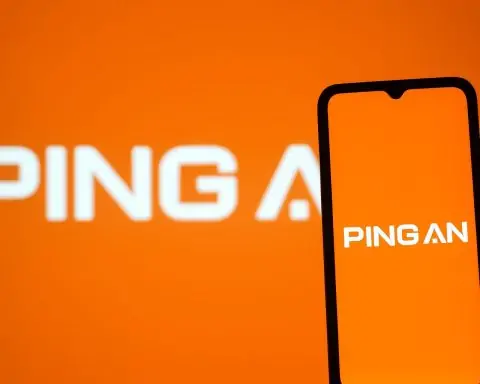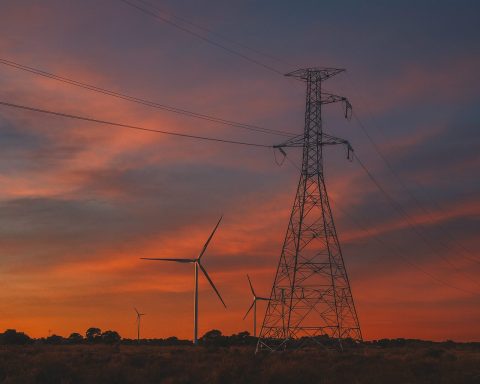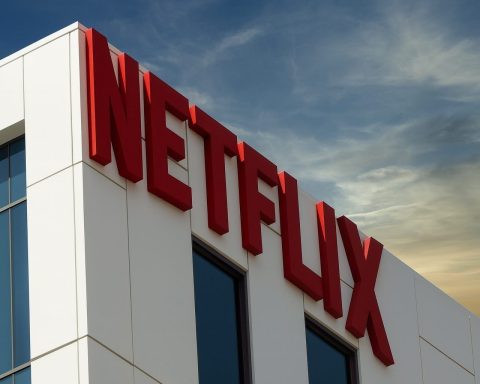- Until 2017 Palau relied entirely on satellite internet, with only about 25% of the population online.
- In 2017 Palau lit its first fiber link by connecting a spur into the trans-Pacific SEA-US cable, known as Palau Cable 1, near Guam, financed by a $25 million Asian Development Bank loan.
- Palau Cable 2 is under construction as part of the Echo transoceanic cable, linking Palau to the Google/Meta-led Echo network; activation is now expected in Q1 2025 with a landing station in Ngardmau State and funding from a Japan–Australia–United States trilateral partnership.
- Mid-2023 Palau experienced a week-long outage of its lone undersea cable after Typhoon Mawar, prompting PNCC to restrict internet access to essential services.
- Belau Submarine Cable Corporation completed a fiber loop around Babeldaob’s Compact Road, enabling 100 Gbps backhaul to connect landing stations, the airport, and population centers.
- The US Rural Utilities Service awarded Palau a $35 million grant in 2023 to fund a nationwide fiber-to-the-home rollout, targeting completion by 2028–29 and replacing copper with optical fiber.
- Mid-2023 Palau launched a 4G/5G Open RAN modernization project, funded by a $14.24 million U.S. grant, making Palau the first Pacific Islands country to pursue a commercial 5G Open RAN deployment.
- There are three main retail ISPs operating in Palau—PNCC (founded 1982; state-owned; operator of PalauCel), Palau Telecoms, and Palau Wifi—under a wholesale-open-access regime.
- In 2022 the regulator banned Starlink in Palau to protect local telecom investments, with considerations to lift the ban after major upgrades around 2025.
- Price reductions followed the submarine cable introduction, with mobile data packs dropping from about $50 per 1 GB to 10 GB for $25, and the government targeting roughly $30 per month for 25 Mbps basic service under the FTTH program.
Palau, a Pacific archipelago famed for its coral reefs and remote islands, has been rapidly modernizing its internet connectivity in recent years. As a small nation of about 18,000 people, Palau long faced challenges in digital access due to its isolated geography and limited infrastructure. Until 2017, Palau relied entirely on satellite links for internet, resulting in high costs and sparse usage – only about 25% of the population had internet access at that time [1]. The deployment of undersea fiber-optic cables marked a turning point, bringing high-speed connectivity to the islands. Today roughly two-thirds of Palauans use the internet [2], and ongoing initiatives aim to extend fast, affordable access across the country. This report examines the current state of Palau’s internet infrastructure, service providers, accessibility, government policies, the emerging role of satellite services like Starlink, challenges, and future plans for improving connectivity in this remote paradise.
Current Internet Infrastructure in Palau
Undersea Fiber-Optic Cables: Palau’s internet backbone is anchored by submarine fiber-optic cables. In 2017, Palau lit its first fiber link by connecting a spur into the trans-Pacific SEA-US cable system [3]. This initial cable (Palau Cable 1) branches off the SEA-US network near Guam, providing Palau with a high-capacity, low-latency connection to global internet hubs [4]. The SEA-US system links Southeast Asia to the U.S. via Guam and Hawaii, and Palau’s spur was installed with the support of a $25 million Asian Development Bank loan [5] [6]. The first cable greatly expanded Palau’s bandwidth (capable of multiple 100 Gbps channels) and reduced latency by replacing the older satellite backhaul [7] [8]. Building on this success, Palau is now completing a second submarine cable (Palau Cable 2) as part of the new Echo transoceanic cable project. This second link will connect Palau to a Google/Meta-led Echo cable spanning Singapore to the U.S. west coast, via a branching unit near Palau [9] [10]. Originally slated for 2024, the Echo spur’s activation was delayed by regulatory hurdles (e.g. environmental requirements in Singapore) and is now expected by Q1 2025 [11]. Palau’s portion of the project – including a new landing station in Ngardmau State – is largely complete, funded through a trilateral partnership of Japan, Australia, and the United States [12]. Once online, the second cable will double Palau’s international connectivity and provide critical redundancy [13] [14]. This means if one cable is damaged (for example, by undersea earthquakes or typhoons), the nation won’t be cut off from the internet. The importance of redundancy was highlighted in mid-2023 when a week-long outage of Palau’s lone cable (due to emergency repairs on the Guam link after Typhoon Mawar) forced PNCC – Palau’s national carrier – to restrict internet access to only critical services [15] [16]. The new Echo cable branch will greatly improve network resilience and capacity.
Domestic Network Infrastructure: Within Palau, internet data arrives via the undersea cable(s) at landing stations on the main island and then is distributed to homes and businesses. Palau’s largest islands (Koror and Babeldaob, which hold most of the population) are now linked by a fiber-optic terrestrial network. The state-owned Belau Submarine Cable Corporation (BSCC) has completed a fiber “loop” around Babeldaob’s Compact Road, installing high-capacity routers that enable 100 Gbps connections along this loop [17]. This fiber ring connects key points (landing stations, the airport, and population centers) to ensure robust backhaul within the main island cluster. However, last-mile connectivity to end users is still a work in progress. Much of Palau’s fixed-line internet access currently runs over older copper telephone lines (ADSL) or wireless links, which cannot fully leverage the gigabit-level capacity of the fiber backbone [18]. As a result, many customers experience relatively modest speeds. For example, a typical home ADSL plan in recent years offered 20 Mbps download/1 Mbps upload for a high price (around $120 per month) [19]. Such legacy copper infrastructure is insufficient for bandwidth-intensive applications (even routine Zoom calls or streaming can strain the limits of ADSL) [20]. Recognizing this, Palau has initiated a major fiber-to-the-home (FTTH) rollout. In 2023, the U.S. Rural Utilities Service (RUS) awarded Palau a $35 million grant to extend fiber connectivity to nearly all homes and premises nationwide [21]. This ambitious project (under the RUS “ReConnect” program) will replace the old copper lines with optical fiber, enabling true broadband speeds for households across Palau’s islands [22]. The FTTH rollout is expected to take about five years (target completion by 2028-29) [23]. Once in place, Palau’s domestic network will be a modern all-fiber system, unlocking the full potential of the undersea cables for residents and businesses. In the interim, incremental upgrades and interim solutions (like fixed-wireless broadband in some areas) are bridging the gap.
Mobile Networks: Mobile connectivity is an essential part of Palau’s internet landscape, given the high mobile phone penetration (over 90% of the population had mobile service even before the fiber era [24]). Currently, Palau has one primary mobile operator, the Palau National Communications Corporation (PNCC), which operates the PalauCel mobile network [25]. PNCC’s network offers 2G/3G coverage nationwide and 4G LTE service in the main population centers of Koror and Airai [26]. As of 2023, PNCC reported about 98% of the population is covered by its 3G/4G signals across the main archipelago, using nearly 60 cell sites on the inhabited islands [27]. Outside the central islands, however, coverage had been very limited – smaller outlying islands and far-flung states had no cellular data service until recently [28]. To address this, PNCC (with international partners) is working to extend mobile coverage to Palau’s most remote communities. In 2024, PNCC began deploying satellite-connected cell sites to the far southwest island states of Sonsorol and Hatohobei, which lie hundreds of kilometers from the capital [29]. These remote cell sites, powered by solar energy and linked via satellite, will for the first time bring mobile voice and data service to those isolated communities [30] [31]. Overall, Palau’s mobile network infrastructure is undergoing a major modernization: in mid-2023 Palau launched a project (with support from the U.S. Trade & Development Agency) to replace the legacy mobile system (previously using older 2G/3G equipment from Huawei) with a next-generation 4G/5G network based on Open Radio Access Network (O-RAN) technology [32]. This will be the first commercial 5G O-RAN deployment in the Pacific Islands [33]. The upgraded network – currently in the design and planning phase – will enable higher speeds and more reliable mobile broadband across Palau, and is funded in part by a $14.24 million U.S. grant aimed at expanding secure 5G infrastructure [34]. In summary, Palau’s core infrastructure now consists of world-class undersea fiber links complemented by ongoing upgrades to on-island fiber distribution and mobile systems, albeit with some constraints until the new projects are fully realized.
Internet Service Providers in Palau
Despite its small size, Palau has a few competing internet service providers (ISPs) in the retail market, all of which rely on the shared national infrastructure described above. The Telecommunications Act of 2017 liberalized the sector and introduced a wholesale-open-access model, whereby the BSCC provides bandwidth to licensed retailers on equal terms [35] [36]. As of 2023, there are three main retail ISPs operating in Palau [37]:
- Palau National Communications Corporation (PNCC): A semi-autonomous, government-owned carrier and Palau’s oldest telecom company. PNCC offers the widest range of services, including the country’s only mobile network (PalauCel), fixed telephone lines, ADSL broadband (branded as PalauNet), fiber leased lines for businesses, and an island-wide Wi-Fi hotspot network. With its long history (founded 1982) and status as the national operator, PNCC serves the majority of residents and businesses. It maintains over 40,000 subscriptions across all services [38] and has a mandate to reach all parts of the nation (the company slogan emphasizes connecting “from Kayangel in the north to Sonsorol and Hatohobei in the south” [39]). PNCC’s retail internet plans historically included DSL and Wi-Fi hotspot access, but the company is now migrating to fiber-to-the-home as infrastructure is built. As the incumbent, PNCC also shoulders universal service obligations (like servicing rural areas) and has been the primary local partner for government initiatives in connectivity.
- Palau Telecoms: A private ISP that entered the market to provide broadband internet via wireless technology. Palau Telecoms (sometimes called Palau Telecom) built out a network of fixed wireless broadband links and Wi-Fi hotspots, allowing customers to get home or business internet without a physical phone line. Before the submarine cable, Palau Telecoms relied on satellites for backhaul, but it now purchases wholesale capacity from BSCC. It launched service in the 2010s and even introduced a limited 2G GSM service in 2018 to compete in mobile voice [40]. Today Palau Telecoms focuses on high-speed wireless internet packages and targets both residential and enterprise clients with what they bill as “cost effective Internet access without the need for telephone lines” [41]. They have been a key competitor driving innovation and price competition with PNCC in the broadband segment.
- Palau Wifi (Palau WiFi Corporation): Another private ISP, Palau Wifi specializes in Wi-Fi hotspot services and local broadband. It operates numerous Wi-Fi access points (for example, in hotels, restaurants, and public areas), selling prepaid internet access to users. Palau Wifi functions as a wireless ISP with a smaller footprint, but it provides an alternative to PNCC’s Wi-Fi in certain locations. In speed tests, Palau Wifi has been ranked as one of the active providers (for instance, one analysis in 2024 showed Palau Wifi’s average download speed was around 1.6 Mb/s, indicating it serves a segment of the market with basic connectivity) [42]. Palau Wifi’s presence ensures that tourists and residents have multiple options for casual internet access via hotspot vouchers. It too depends on BSCC’s fiber backbone for international bandwidth.
These three ISPs form the Telecommunications Association of Palau (TAP), a collaborative group that works with the government and BSCC on sector development [43]. Notably, no foreign telecom operators are currently licensed in Palau, and the market is protected by law until at least 2025 to allow these local providers to grow [44]. PNCC remains the dominant player, especially for mobile and fixed voice services, but Palau Telecoms and Palau Wifi contribute to a modest level of competition in internet access, especially in Koror’s urban area. All ISPs ultimately leverage the same national fiber infrastructure, an approach designed to “share infrastructure, share cost” and keep wholesale prices low through economies of scale [45]. This structure has helped Palau avoid duplicate networks and instead pool resources for one robust backbone that everyone can use. Going forward, the planned lifting of the moratorium on new licenses after 2025 may open the door for additional providers or international services to enter Palau’s telecom market, which could further expand consumer choice.
Availability, Speed, and Cost of Internet Access
Availability and Usage: Internet access in Palau has expanded significantly in the past few years. At the start of 2023, an estimated 11.9 thousand Palauans were internet users, representing about 65.6% of the population [46]. This is a remarkable jump from roughly 25% usage before the submarine cable era [47]. The introduction of fiber connectivity in 2017-2018 made higher-speed internet widely available and more attractive to consumers, spurring this growth. Most users access the internet via mobile devices or Wi-Fi hotspots, since fixed broadband lines (DSL or fiber) are still relatively few. As of 2023, Palau had only about 7 fixed broadband subscriptions per 100 people (roughly 1,300 total fixed connections) [48], indicating that many households rely on mobile data or shared Wi-Fi rather than dedicated home broadband. In urban Koror and Airai, 4G LTE mobile service and numerous Wi-Fi hotspots provide connectivity for residents, businesses, and the tourism sector [49] [50]. In more remote villages on Babeldaob island, DSL over copper lines has been available but with limited speeds. Until recently, Palau’s outer island communities (like Sonsorol, Hatohobei, Kayangel) had virtually no internet access at all – but in 2024 PNCC began rolling out satellite-fed community Wi-Fi and cellular hotspots in these areas, finally bringing basic internet to those distant islands [51]. Overall, the coverage footprint of some form of internet (mobile, Wi-Fi, or fixed) now reaches most of Palau’s populated areas, though the quality and speed can vary widely depending on location and technology.
Speeds: With the current mix of technologies, internet speeds in Palau range from decent broadband to slow and intermittent, largely hinging on whether the user is on fiber, 4G, or older systems. On the high end, some businesses and government offices in Koror that have direct fiber or microwave links can get tens or hundreds of Mbps. But for the average resident, speeds have been constrained by last-mile bottlenecks. A standard home DSL connection is around 5–20 Mbps download at best, and many users on Wi-Fi hotspots or 3G mobile experience only a few Mbps or less in practice. Indeed, recent tests showed the fastest average broadband speeds in Palau were on the order of 3–5 Mbps down [52] – a fraction of what modern fiber can deliver. Streaming HD video or engaging in video conferences is possible in Palau, but not always reliably so, especially during peak usage times or in areas still on older infrastructure. The government has acknowledged that “current infrastructure only supports relatively slow speeds” that are “insufficient for uninterrupted internet-based calls” and other common applications [53]. This will change as fiber-to-the-home is deployed, enabling gigabit-capable connections to households in the coming years. Additionally, the planned 5G mobile network upgrade could dramatically improve wireless speeds and latency, with the potential for tens of Mbps to each smartphone user once 5G is live. For now, many Palauans “make do” with moderate speeds that are improving gradually as upgrades roll out. It’s worth noting that even these modest speeds are a huge improvement from the pre-2017 era, when dial-up and satellite links often meant sub-1 Mbps performance.
Cost of Internet Access: The cost of internet service in Palau has historically been very high, reflecting the expensive satellite bandwidth and the small market. The arrival of the fiber-optic cable allowed prices to drop, but internet plans are still costly by international standards. When the submarine cable went live, Palau’s ISPs significantly reduced tariffs – for example, before 2018 a 1 GB mobile data pack cost around $50, whereas afterward packages like 10 GB for $25 were introduced [54]. This was a transformative change; effectively the price per GB fell from $50 to $2.50, making internet use more affordable for ordinary people. Despite such improvements, absolute prices remain steep. A monthly home internet subscription (ADSL) with 20 Mbps download speed has been about $120, which is quite expensive for the speed provided [55]. By comparison, in the U.S. or Europe, $120 could buy a gigabit-fiber plan in many cities. The Palau government is pushing for more affordable rates: a condition of the new RUS fiber grant is that internet prices be brought down to roughly $30 per month for a basic 25 Mbps service [56]. Achieving this four-fold price reduction will be challenging for PNCC and other providers [57], as it may require cross-subsidies or external support to maintain profitability. Mobile data in Palau is sold through prepaid plans, and while significantly cheaper than before, it is still a considerable expense for heavy users. Currently, PNCC offers combo top-ups (data plus voice minutes) such as 10 GB + 190 minutes for $25 (valid 30 days) [58]. Casual users can buy 2 GB for $2 (2-day pass) or use pay-as-you-go data at around $0.15 per MB (which equates to a pricey $150 per GB if no package is used) [59]. For tourists, PNCC and Palau Wifi sell prepaid Wi-Fi access cards (e.g. a 5-day unlimited Wi-Fi pass for about $5–$10) [60], and many hotels include Wi-Fi for guests. In summary, internet access in Palau is available but comes at a high cost relative to local incomes. This has been a barrier to universal adoption, although the penetration is now above 65%. The government’s goal is to drive prices down to a more reasonable level (on par with 2% of an average household’s income for basic service) [61]. If the new infrastructure investments succeed and competition increases after 2025, residents and businesses can expect better value for money – higher speeds and data caps for the same or lower price – making the internet a more integral part of daily life in Palau.
Government Initiatives and Regulatory Framework
The Palauan government has been proactive in reshaping the telecommunications sector to improve digital connectivity. A combination of policy reforms, investments, and international partnerships forms the backbone of Palau’s strategy to bridge the digital divide.
Telecommunications Act and Regulatory Body: A major reform came with the Telecommunications Act of 2017 (RPPL 10-17), which aimed to liberalize and modernize the sector [62]. This law established a new regulator – the Bureau of Communications under the Ministry of Infrastructure, Industries and Commerce – to oversee telecom services and licensing [63]. It also created the framework for BSCC as a wholesale-only bandwidth provider and for multiple retail ISPs to operate (ending PNCC’s longtime monopoly). However, recognizing the need to protect the nascent fiber project and the incumbent providers’ financial stability, the law initially included a short-term moratorium on licensing any new telecom operators. In 2021, President Surangel Whipps Jr. signed an amendment extending this moratorium on new entrants until 2025 [64]. This effectively grants the existing three providers (PNCC, Palau Telecoms, Palau Wifi) a further period of exclusivity in the market [65] [66]. The government justified this extension by citing the economic impacts of COVID-19 and the need for local telcos to recoup their investments (e.g. PNCC’s loan repayments for the cable) without immediate outside competition [67]. President Whipps did express some reservations, noting that protection should not lead to complacency, and he urged PNCC to improve services even in the absence of new competition [68]. The intent is that after 2025, Palau’s telecom market will open up, potentially allowing foreign operators or new technologies (like satellite ISPs) to be licensed, which could further spur improvements.
Regulation in Palau thus far has focused on “shared infrastructure, shared cost” principles [69] and ensuring nationwide service. BSCC, created in 2015 as a state-owned enterprise, is mandated to offer capacity to all licensed ISPs at equal terms [70]. This prevents duplication of international links and lets the country aggregate demand to get better pricing on bandwidth. The government also instituted a Universal Service Fund (USF) mechanism (PNCC contributes a portion of revenue to USF) to support extending telecom services to underserved areas [71]. For example, PNCC’s recent project to connect the remote Southwest Islands with satellite was supported by a Japan-UNDP grant, reflecting the government’s commitment to leaving no community offline [72]. Regulatory decisions have sometimes been bold – for instance, Palau’s regulator took the unusual step of banning the sale or use of Starlink’s internet service in Palau (discussed more below) to shield the local market temporarily [73] [74].
Government Initiatives and Partnerships: Palau’s leadership has actively sought international assistance and partnerships to boost digital infrastructure. The first submarine cable was financed by an Asian Development Bank loan and technical help from partners like Japan (NEC built the spur) [75]. The second cable is funded by a trilateral Pacific regional infrastructure initiative of the US, Japan, and Australia, demonstrating Palau’s strategic use of alliances to improve connectivity [76]. The United States in particular, under the umbrella of the Compact of Free Association, has provided significant support: aside from the $35M RUS grant for FTTH [77], the U.S. funded a $850k technical assistance for mobile network planning and allocated $14M from its Coronavirus Capital Projects Fund to implement Palau’s 5G/Open RAN upgrade [78]. Japan has donated equipment (e.g. solar-powered satellite units for outer islands) and expertise, while Taiwan and other partners have helped with ICT training and e-government applications. There are also regional cooperative efforts – Palau engages with organizations like the Pacific Islands Telecommunications Association (PITA) and has discussed sharing satellite backup capacity with neighboring island countries [79].
On the domestic front, the government formed the Telecommunications Agency of Palau (TAP) – essentially a coordination body comprising the ISPs and BSCC – to jointly pursue improvements [80]. Through TAP, the ISPs agreed on open interconnection and joint resilience planning (for example, pooling resources for satellite backup in case of a cable break) [81]. Palau’s policymakers have also incorporated digital connectivity into broader development plans. Recognizing that better internet can diversify the economy (enabling IT services, improving tourism experiences, etc.), the government emphasizes ICT in its national development strategy. Initiatives to connect all schools, healthcare facilities, and government offices to high-speed internet have been underway, leveraging the expanded bandwidth from BSCC [82]. By 2018, each ISP’s capacity from BSCC was doubled at no extra wholesale cost, on the condition they pass those gains to users via faster speeds or lower prices [83] [84]. Such measures show a hands-on approach: rather than leaving everything to the market, the Palau government frequently steps in to ensure social objectives (like affordable internet for students or digital inclusion in rural areas) are met.
Regulatory Framework Summary: In summary, Palau’s regulatory environment is characterized by a public-private partnership model where the government (through BSCC and policies) provides core infrastructure and a stable environment for service providers. The framework encourages competition among a few local players while temporarily excluding foreign giants until local capacity is strengthened. It also contains consumer protection elements – for instance, any rate increases by PNCC often require regulatory approval, and the push for lower tariffs is part of the RUS grant conditions [85]. Going forward, the regulatory bureau will face new questions such as licensing Starlink or other satellite operators after 2025, managing spectrum for 5G, and continuing to ensure that remote areas get service (possibly via subsidies or new tech). Palau’s experience so far demonstrates a careful balancing act: embracing liberalization and new technology, but with measured safeguards to ensure the country’s unique needs (financial viability, universal access) are addressed.
Satellite Internet Services: Starlink and Other Providers
Given Palau’s remote location and scattered islands, satellite internet has always played a role in connectivity – and it continues to do so even as fiber-optic cables dominate international traffic. The role of satellite services in Palau can be seen in two facets: as a complement/backup to fiber infrastructure and as a potential competitor to traditional ISPs for end-user connectivity.
Historical and Complementary Role: Before the submarine cables, Palau’s only option for internet backhaul was geostationary satellites. PNCC and other ISPs leased satellite bandwidth (often C-band or Ku-band capacity) which was not only slow (high latency ~600-700ms and limited throughput) but extremely expensive, leading to the very high internet prices of the past [86] [87]. Satellite bandwidth constraints largely kept Palau’s internet penetration low and usage metered. The fiber cable drastically reduced that dependence. However, satellites are still crucial for redundancy and to reach places fiber cannot. In mid-2023, when Palau’s undersea cable was temporarily offline for repairs, PNCC turned to satellite links to keep essential services online [88]. Learning from that incident, Palau invested in a robust satellite backup solution. In May 2024, Intelsat (a satellite operator) implemented a dual-satellite system for Palau to provide an “always-on” backup for the entire nation [89] [90]. This solution uses two geostationary satellites in different orbital slots and an SD-WAN (software-defined networking) system to seamlessly blend them with the terrestrial network [91]. In normal times, Palau relies on the fiber cable, but if the cable fails or needs maintenance, the Intelsat service automatically takes over, ensuring continuity of internet and phone services. During outages, critical infrastructure can use a dedicated C-band channel, while general public traffic goes over a high-throughput Ku-band channel [92]. This dual-band approach gives PNCC flexibility to allocate satellite capacity where needed and to scale it in emergencies [93]. The presence of a ready satellite backup is a lifeline – it means Palau is no longer one cable cut away from total communication blackout.
Furthermore, satellites are being used to reach Palau’s outer islands. Fiber cables run only to the main Palau archipelago (the populated islands around Koror/Babeldaob). But several small island groups like Sonsorol, Pulo Anna, and Tobi (Hatohobei) are hundreds of kilometers to the southwest, very isolated with only a few hundred residents in total. Running undersea fiber to them is not economically feasible. For years these islands lacked modern communications, but now PNCC, with aid from partners, has installed satellite-enabled community internet in those locations. In 2024 PNCC announced that it “successfully connected Sonsorol State to high-speed internet via a new satellite dish” – a milestone for that community [94]. These remote terminals are solar-powered and provide Wi-Fi or cellular signals locally, linked back to Palau via satellite. Intelsat noted that its new solution “allowed PNCC to now provide internet services to Palau’s Southwest islands for the first time,” opening a previously untapped market and connecting those citizens to the rest of Palau and the world [95] [96]. In summary, satellite connectivity remains a vital component of Palau’s network topology, serving as both a safety net for the nation’s internet and an enabler of universal access to each far-flung island.
Starlink and LEO Satellites – Potential Game Changers: In recent years, low Earth orbit (LEO) satellite constellations like SpaceX’s Starlink have emerged, promising high-speed, low-latency internet anywhere on the globe – especially appealing for remote islands. Starlink’s service (delivered via a dish antenna) can offer 50–200 Mbps downloads with latency under 50 ms, a vast improvement over older satellites. The monthly cost for Starlink in the Pacific is roughly $90–$120, which is comparable to what Palauans pay now for far slower services [97]. Naturally, many in Palau have been eager at the prospect of Starlink as an alternative or supplement to existing ISPs. However, Palau’s government to date has taken a cautious (even prohibitive) stance on Starlink. The national regulator in 2022 issued a regulation explicitly banning Starlink’s service in Palau [98]. This means Starlink is not legally authorized to sell or operate in the country, despite the service technically being available in the region. The decision was influenced by concerns over competition and the viability of Palau’s own telecom investments. As the Palau Economic Review noted, the ban “appears to be an anti-competitive move” designed to restrict outside competition [99]. Incumbent providers, especially PNCC, feared that if Starlink were allowed immediately, it could siphon off the most profitable customers (businesses and heavy users in urban areas), eroding the revenue base needed for PNCC to repay loans and fund expansions [100]. Residential customers might still have remained with local providers (due to costs or bundle services), but large commercial clients could have easily switched to Starlink for better speeds, impacting PNCC’s finances [101]. At the same time, Palau was in the middle of executing the RUS-funded fiber-to-the-home project and the mobile network overhaul. The government thus argued that allowing Starlink during this critical upgrade period could undermine the success of those projects – for instance, making it harder for PNCC to get subscribers onto the new fiber network if a plug-and-play satellite option was competing.
Palau’s stance on Starlink is in contrast to some neighbors: the Federated States of Micronesia (FSM) went ahead and licensed Starlink in 2022 despite resistance from its own telecom company [102], and the Marshall Islands have allowed Starlink informally (people use it there) though they haven’t issued a license yet [103]. In Palau, for now, Starlink kits cannot be legally imported or activated. That said, the ban is likely temporary. The same 2023 economic report recommended that “once the RUS [FTTH] and mobile network modernization projects are complete, the ban on Starlink should be lifted” [104]. Government officials have signaled that they are not against Starlink per se, but they want to introduce it on Palau’s terms and timing. Indeed, Palau’s President Whipps stated in 2022 that they were focusing on expanding fiber and would consider new services like Starlink in the future once local systems were fully in place [105]. In essence, Palau is protecting its significant telecom investments (the submarine cables, the FTTH rollout, etc.) during the payoff period. By around 2025 or shortly after, we can expect Palau to revisit Starlink – possibly granting it a license to operate. At that point, Starlink could play a very positive role: it could connect ships at sea, remote tourism sites, or serve as a competitive broadband option in rural areas where laying fiber is costly. Starlink’s presence could also keep the local ISPs on their toes regarding pricing and service quality.
Aside from Starlink, other satellite providers might eye Palau. OneWeb, another LEO constellation, is expanding in Oceania and could be an option for government or enterprise connectivity. O3b mPOWER (MEO satellites by SES) might offer high-throughput links that BSCC or ISPs could use for backup or specific clients (Palau Telecoms had used O3b satellites prior to fiber). The key difference with these next-generation satellites is their ability to deliver fiber-like performance. For Palau’s outer islands, a Starlink or OneWeb terminal might eventually offer each household broadband comparable to the main island – completely leapfrogging the need for underwater cables to those locations. The government will likely carefully manage the introduction of LEO services to ensure they complement rather than undermine Palau’s telecom ecosystem. In any case, satellites – both old and new – are and will remain an integral part of Palau’s connectivity strategy, whether as a backup for resilience, a last-mile solution for remote areas, or an alternative broadband choice for consumers and businesses.
Challenges Related to Geography, Cost, and Infrastructure
While Palau has made impressive strides, it continues to face several challenges in delivering reliable, affordable internet to all its citizens:
- Geographic Dispersion: Palau’s geography is its biggest challenge – an archipelago of around 250 islands spread over 600 km of ocean. The population is concentrated on a few islands, but small communities are scattered on distant atolls. Providing physical connectivity (cables or microwave links) to every inhabited island is logistically difficult and expensive. Rugged coral reefs, deep ocean trenches, and environmental sensitivities (Palau prioritizes reef conservation) complicate infrastructure projects. For instance, routing undersea cables had to be carefully planned to avoid coral reefs and seagrass beds [106]. Even on the main island of Babeldaob, villages are far-flung, raising costs to lay fiber or cables to each home. This geography means Palau must rely on a mix of solutions (fiber for main hubs, satellites for remote spots), which adds complexity to the network.
- Small Market and High Costs: With only 18,000 people and a modest economy, Palau doesn’t have the scale to naturally drive down telecom costs. The upfront investments for things like a $30 million submarine cable or a nationwide fiber network are huge on a per-capita basis. Even with grants and loans, the ongoing operational costs must be recovered from a tiny customer base. This has historically led to very high subscription prices to recoup investments [107]. The market size also deters big private telecom companies from entering on their own – there’s limited profit to be made. Thus, Palau has had to depend on concessional funding and public-sector leadership to build infrastructure that in larger countries would be done by private telcos. Ensuring affordability for consumers while maintaining financial viability of the providers is a constant tightrope. The government’s push to slash prices (e.g. targeting $30/month internet) will test the sustainability of local ISPs unless user numbers grow significantly or costs are subsidized [108].
- Infrastructure Maintenance and Resilience: Palau’s tropical marine environment poses challenges to infrastructure. Submarine cables can be damaged by earthquakes, ship anchors, or severe storms (as nearly happened in 2023) [109]. The climate also affects land infrastructure – typhoons, heavy rain, and salt air can damage towers, antennas, and cables. Backup generators and stable power are needed to keep network equipment running on remote sites; Palau’s outer islands have very limited power, necessitating solar panels and batteries for telecom gear. Additionally, Palau’s technical manpower is limited – maintaining a cutting-edge fiber and 5G network requires highly skilled personnel. The country often relies on external expertise for complex repairs or upgrades, which can be slow to arrange in emergencies. The new redundancy measures (second cable, satellite backup) mitigate some risk, but they also introduce more components to maintain (e.g. two landing stations, teleports for satellites, etc.). Ongoing training and investment in maintenance will be crucial to keep the system resilient.
- Economic Dependence and Policy Constraints: Palau’s telecom improvements are tied to external economic and political factors. The reliance on foreign aid/funding means projects must align with donor conditions (like the RUS requirement for affordable rates) [110]. If economic conditions change (for example, if tourism – a major revenue source – suffers a downturn, it could indirectly affect telecom usage and revenues), the sector could face difficulties. The protective moratorium on new entrants, while giving breathing room to PNCC and others, also means Palau hasn’t benefited from outside investment or innovation that a new competitor might bring during this time. The country has effectively bet on its internal players to deliver results, and any shortcomings there could leave consumers with less-than-ideal service until competition arrives. Moreover, policy decisions like the Starlink ban have a trade-off: they protect local business in the short run but could frustrate consumers who want better service now. Balancing these factors – encouraging PNCC to improve while planning to embrace competition – is a delicate challenge for policymakers.
- Digital Literacy and Demand: On the softer side, Palau must ensure that its population can fully utilize improved internet access. Many older Palauans or those in rural areas may not be as digitally literate or may not yet see the need for high-speed internet. As infrastructure reaches them, there may be a lag before they adopt it (especially if cost is an issue). Programs to increase digital skills, develop local online content, and demonstrate the value of internet for education, health, and business will help stimulate demand. Higher demand in turn improves the economies of scale for service providers. Without robust usage, even the best infrastructure remains underutilized (for example, Palau’s first cable has huge capacity mostly untapped as of yet [111]). Thus, an ongoing challenge is growing the digital ecosystem – getting more services online (e-government, telehealth, e-commerce) so that people have reasons to subscribe and use the internet extensively.
In summary, Palau’s journey to better internet is not without obstacles. Geography makes it inherently costly and complex to build and maintain networks. The limited market size forces creative solutions and external help to finance projects. Technical resilience against natural threats is a perpetual concern. And the path chosen – of carefully phased competition – has its pros and cons. However, Palau has shown a nimbleness in addressing these challenges, such as quickly moving to add a second cable and satellite backup after recognizing vulnerabilities. Continued focus on these challenges will be necessary to achieve the goal of equitable, affordable connectivity from the biggest city to the smallest atoll.
Recent Developments and Future Plans
Palau stands at an important juncture in its digital development, with several major improvements in the pipeline. Recent developments have already started to transform internet access, and upcoming projects promise to further elevate Palau’s connectivity in the near future. Here is an overview of what’s on the horizon:
- Activation of the Second Undersea Cable (Echo Spur in 2025): The most imminent upgrade is the second international fiber cable coming online. As of mid-2024, final tests and regulatory clearances are underway for the Echo cable spur, with service expected in the first quarter of 2025 [112]. This new cable, connecting Palau to the Echo network (which runs between Asia and the U.S.), will significantly boost Palau’s total bandwidth and provide a redundant route for internet traffic [113]. Once activated, Palau will have direct fiber paths to both Guam (via the first cable) and to Southeast Asia/USA (via the second cable), allowing flexible routing. This not only improves reliability but could also lower latency to certain destinations and reduce wholesale bandwidth costs through competition between routes. The additional capacity can support increasing data demand for years to come and enable new services (like high-definition video streaming, cloud services for businesses, etc.) without the previous worry of saturating the single link. The second cable is a cornerstone of Palau’s future-proofing – ensuring that one technical failure or one supply route cannot cut off the nation. It also symbolizes Palau’s international partnerships, having been funded collaboratively by allies for the strategic benefit of the region [114]. By 2025, Palau will join the ranks of Pacific nations with fully redundant submarine cable infrastructure, a significant milestone.
- Nationwide Fiber-to-the-Home (FTTH) Rollout: With the funding secured and initial designs in progress, Palau’s ambitious FTTH project is slated to begin construction in 2024 [115]. Over the next five years, PNCC (with RUS grant support) will lay fiber optic lines directly to homes, businesses, schools, and government buildings across the main islands. This involves replacing the old copper telephone wires with optical fiber cables in almost all communities. The plan aims for near-universal coverage – “nearly all parts of the nation” are to get high-speed fiber connectivity to their doorstep [116]. Practically, this will mean that even a household in a small village on Babeldaob, or a business on Peleliu island, can have a broadband connection on par with those in downtown Koror. The FTTH network will enable packages of 100 Mbps, 1 Gbps or more, which today are impossible on DSL. It’s expected that, as part of this project, legacy DSL exchanges will be upgraded and every customer migrated to fiber over time. By the end of the decade, Palau’s residents should experience a leap in internet quality – no more buffering videos or struggling with slow downloads, as fiber’s symmetric high speeds and low latency become the norm. Additionally, the fiber rollout will support the government’s goal of affordable pricing (since fiber is more efficient to operate at scale). The target of $30/month for 25 Mbps [117]might be achievable when thousands of customers are on the new network and costs are amortized. The fiber network will also strengthen local connectivity: for instance, enabling better local streaming, local cloud services, and connectivity between government offices within Palau independent of the undersea links.
- Mobile Network Modernization to 4G/5G: In parallel, Palau’s mobile network upgrade is set to continue. After completing the design and planning phase (funded by USTDA) in 2023 [118], PNCC will move to implement the new O-RAN based network. The timeline for deployment will depend on procurement and integration, but it could roll out as early as 2024–2025 in stages. We can expect expanded 4G LTE coverage to all states (replacing any remaining 2G areas) and the introduction of 5G services in urban centers. Being the first in Oceania to use Open RAN architecture, Palau’s network will be more flexible and possibly more cost-effective, with multi-vendor interoperability [119]. For consumers, this means faster mobile data – potentially tens or even hundreds of Mbps on 5G – and new possibilities such as fixed wireless access (using 5G to deliver home internet in areas fiber hasn’t reached yet). The upgraded mobile system will also improve voice service quality and enable advanced features (like nationwide HD voice, IoT connectivity for smart devices, etc.). The government’s support for this project stems from both the desire for cutting-edge services and national security considerations (replacing Huawei gear with “secure and trustworthy” equipment) [120]. By embracing Open RAN, Palau could serve as a model for other Pacific islands on how to deploy modern telecom in a cost-conscious way. The result by the late 2020s should be a seamless connectivity experience: whether a user is on fiber at home, Wi-Fi at a cafe, or 5G on the go, they can expect fast and stable internet.
- Lifting of Market Restrictions and New Services: Around 2025, Palau is poised to enter a new phase of its telecom market with the expiration of the current moratorium on new licenses [121]. The government has indicated that it will open up the market, which could attract new ISPs or telecom operators. This might include international companies partnering locally or new local entrepreneurs. Notably, Palau will likely revisit Starlink and similar satellite broadband services at that time. If/when Palau licenses Starlink (or simply allows it), residents could have the option to subscribe to Starlink’s satellite internet directly. This could be a boon for those in remote locations or anyone seeking an alternative to terrestrial providers. Starlink’s presence might also push local ISPs to offer competitive unlimited data plans or bundle services to retain customers. We might also see other players like OneWeb enter agreements to serve government or maritime connectivity needs. Additionally, a more open market might lead PNCC to restructure or innovate – for example, PNCC could transition into primarily an infrastructure provider (focusing on wholesale fiber and mobile network operation) while private retailers compete on service. Regulatory frameworks will be adjusted to manage a multi-player market (e.g. ensuring interconnection, number portability, consumer protection in a competitive setting). Overall, post-2025 liberalization is expected to inject fresh energy into Palau’s connectivity scene, with the government’s role shifting to referee and facilitator rather than direct financier of projects.
- Enhanced Digital Services and Applications: With improved connectivity, Palau is simultaneously working on the digital services that ride on top of the internet. Recent news highlights efforts like digital health, online education, and e-government. For instance, Palau is introducing digital passports and IDs with the help of international partners [122] – these require secure internet systems. Telemedicine trials have been conducted to link Palau’s clinics with off-island specialists, something only feasible with reliable broadband. The education sector is looking to leverage connectivity for remote learning (especially important in outer islands). There’s also a growing tech and innovation scene; Palau made headlines by launching a digital residency program using blockchain, and exploring financial technology (like a stablecoin in partnership with crypto firms) [123] [124]. All these initiatives underscore that Palau’s investments in infrastructure are meant to enable a broader digital transformation. In the coming years, we can expect more government services to go online (paying taxes, registering businesses, etc.), as well as more opportunities for Palauans to work remotely or develop online businesses given the better connectivity. The government is keen to diversify the economy (which is heavily tourism-based) by using the internet – for example, enabling knowledge outsourcing or creative industries that can operate from Palau.
In conclusion, Palau’s near future in terms of internet access looks bright. By 2025–2026, the country should have in place a redundant global connectivity, a fiber-rich local network, and a state-of-the-art mobile system – a combination that would have been unthinkable a decade ago for such a small island nation. The cost of internet is anticipated to drop as capacity increases and competition kicks in, making access more equitable. Challenges will persist (maintaining all this infrastructure and making sure it’s optimally used), but Palau is clearly on a trajectory from being a digital laggard to potentially a regional leader in innovative connectivity solutions. The journey “from coral reefs to Starlink” is an apt metaphor: Palau is marrying its unique environmental heritage with cutting-edge technology. By overcoming the connectivity hurdles of distance and isolation, Palau is ensuring that even in one of the world’s most remote paradises, people can be connected to the global digital community while preserving the natural beauty that makes Palau special.
Sources: Palau Economic Review 2023 [125] [126] [127]; Island Times (Palau) [128] [129]; Belau Submarine Cable Corp [130]; Intelsat Press Release (2024) [131] [132]; Pacific Note [133]; DataReportal (Digital 2023: Palau) [134]; Island Times (2018) [135] [136]; Island Times (2021) [137]; PNCC/APAC Outlook Interview [138]; Prepaid Data SIM (Palau) Wiki [139].
References
1. www.pacificnote.com, 2. datareportal.com, 3. belaucable.com, 4. belaucable.com, 5. www.pacificnote.com, 6. www.mbjguam.com, 7. www.pacificnote.com, 8. www.pacificnote.com, 9. islandtimes.org, 10. www.mbjguam.com, 11. islandtimes.org, 12. islandtimes.org, 13. islandtimes.org, 14. islandtimes.org, 15. www.intelsat.com, 16. www.intelsat.com, 17. islandtimes.org, 18. pitiviti.org, 19. pitiviti.org, 20. pitiviti.org, 21. pitiviti.org, 22. pitiviti.org, 23. pitiviti.org, 24. www.pacificnote.com, 25. prepaid-data-sim-card.fandom.com, 26. prepaid-data-sim-card.fandom.com, 27. www.apacoutlookmag.com, 28. prepaid-data-sim-card.fandom.com, 29. www.apacoutlookmag.com, 30. www.intelsat.com, 31. www.apacoutlookmag.com, 32. pitiviti.org, 33. pitiviti.org, 34. pitiviti.org, 35. islandtimes.org, 36. belaucable.com, 37. islandtimes.org, 38. www.apacoutlookmag.com, 39. www.apacoutlookmag.com, 40. islandtimes.org, 41. www.palautelecoms.com, 42. www.broadbandspeedchecker.co.uk, 43. islandtimes.org, 44. islandtimes.org, 45. islandtimes.org, 46. datareportal.com, 47. www.pacificnote.com, 48. www.theglobaleconomy.com, 49. prepaid-data-sim-card.fandom.com, 50. www.pnccpalau.com, 51. www.intelsat.com, 52. www.speedgeo.net, 53. pitiviti.org, 54. prepaid-data-sim-card.fandom.com, 55. pitiviti.org, 56. pitiviti.org, 57. pitiviti.org, 58. prepaid-data-sim-card.fandom.com, 59. prepaid-data-sim-card.fandom.com, 60. www.pnccpalau.com, 61. pitiviti.org, 62. islandtimes.org, 63. pitiviti.org, 64. islandtimes.org, 65. islandtimes.org, 66. islandtimes.org, 67. islandtimes.org, 68. islandtimes.org, 69. islandtimes.org, 70. belaucable.com, 71. islandtimes.org, 72. www.intelsat.com, 73. pitiviti.org, 74. pitiviti.org, 75. belaucable.com, 76. islandtimes.org, 77. pitiviti.org, 78. pitiviti.org, 79. islandtimes.org, 80. islandtimes.org, 81. islandtimes.org, 82. islandtimes.org, 83. islandtimes.org, 84. islandtimes.org, 85. pitiviti.org, 86. www.pacificnote.com, 87. prepaid-data-sim-card.fandom.com, 88. www.intelsat.com, 89. www.intelsat.com, 90. www.intelsat.com, 91. www.intelsat.com, 92. www.intelsat.com, 93. www.intelsat.com, 94. www.cyberera.com.ng, 95. www.intelsat.com, 96. www.intelsat.com, 97. pitiviti.org, 98. pitiviti.org, 99. pitiviti.org, 100. pitiviti.org, 101. pitiviti.org, 102. pitiviti.org, 103. pitiviti.org, 104. pitiviti.org, 105. www.facebook.com, 106. islandtimes.org, 107. pitiviti.org, 108. pitiviti.org, 109. www.intelsat.com, 110. pitiviti.org, 111. www.pacificnote.com, 112. islandtimes.org, 113. islandtimes.org, 114. www.mbjguam.com, 115. pitiviti.org, 116. pitiviti.org, 117. pitiviti.org, 118. pitiviti.org, 119. pitiviti.org, 120. pitiviti.org, 121. islandtimes.org, 122. islandtimes.org, 123. pitiviti.org, 124. pitiviti.org, 125. pitiviti.org, 126. pitiviti.org, 127. pitiviti.org, 128. islandtimes.org, 129. islandtimes.org, 130. belaucable.com, 131. www.intelsat.com, 132. www.intelsat.com, 133. www.pacificnote.com, 134. datareportal.com, 135. islandtimes.org, 136. islandtimes.org, 137. islandtimes.org, 138. www.apacoutlookmag.com, 139. prepaid-data-sim-card.fandom.com










